In 2022, MNCH archaeologists and researchers excavated a dump site associated with the Andersen Dairy homestead near Bend, Oregon. The research is part of Oregon Department of Transportation's Bend North Corridor Realignment. More than 2400 items were removed and catalogued.
For more information, visit the Oregon Department of Transportation's project page.
The Bend area is the traditional homelands of the Wasco, Warm Springs and Northern Pauite people. Living descendants of these bands are members of the the Confederated Tribes of Warm Springs. Non-Indigenous settlers began arriving in the 1800s, and by 1852 up to 12,000 settlers were crossing the area every year. The treaty of 1855 ceded approximately 10 million acres of traditionally Indigenous land to the Oregon Territory, reserving the Warm Springs Reservation for the Tribes' exclusive use.
In 1894, the Carey Act of 1894 (the Federal Desert Land Act) gave settlers 160 acres of land if they lived on it and, within 10 years, converted at least 20 acres to irrigated agriculture. Irrigating the desert lands of Central Oregon was of commercial and governmental interest to open farmland and expand the economies of the west. The state of Oregon arranged the construction of dams and canals by contracting with private companies.
The Swalley Canal began construction in 1899. The historic Oregon Trunk Line Railroad reached Bend in 1911.
In 1912, Walter Daniels of Illinois acquired the first land patent for the property near what would become the Andersen dairy. Ownership of the property passed to Daniels' daughter Lillian and her husband, Nels Andersen, in 1933.
Nels and Lillian Andersen established the Lilly Dairy in 1915, as one of ten dairies providing milk and butter to the area. By 1935, the dairy had expanded many times and was one of the largest dairies to service Bend.
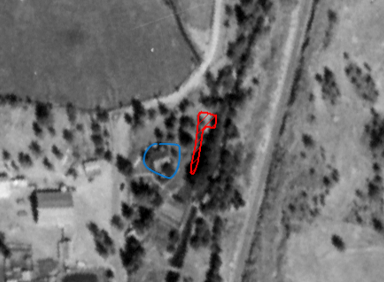
Red line denotes approximate area of dump site.
Blue line denotes historic Andersen house.
The Oregon State Historic Preservation Office (SHPO) had identified the site as historic in 2010. With ODOT's proposal for realigning the Bend North Corridor, museum archaeologists needed to preserve the artifacts of the site.
Their first task was to confirm the site boundaries. They used probes to find the areas where no cultural materials were present, then the areas where artifacts began appearing in the soil, and established a clear map of the site.
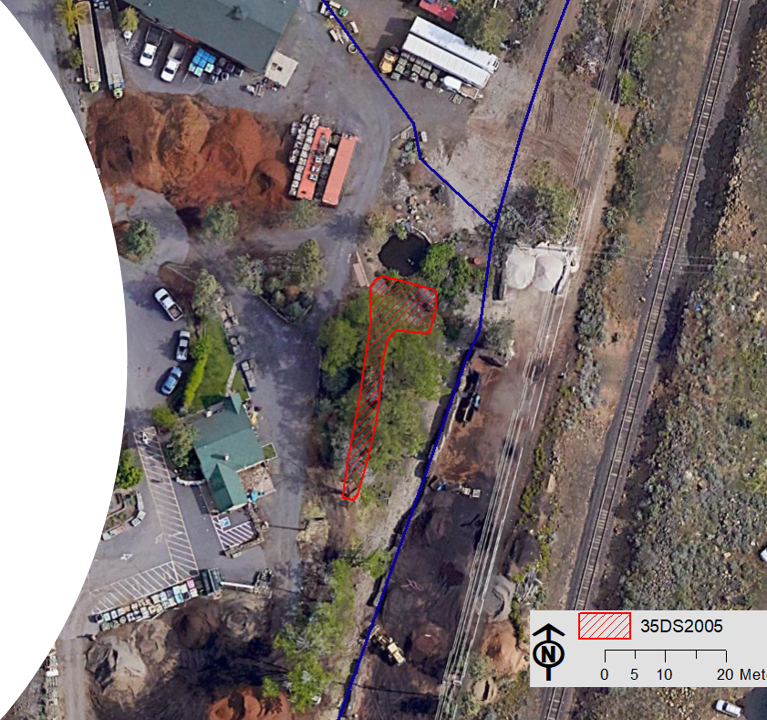
Buildings are a nearby landscaping company.
Red line denotes dump site boundary.
On a project like this, researchers conduct methodical hand excavations in strategic locations, collecting meticulous data throughout the site. In total, archaeologists excavated 7.75 square meters from this site. The excavations averaged a density of 1360 artifacts per cubic meter, which were mostly glass and metal objects.
After two weeks in the field, the team brought the found items to the museum for cleaning, study, and conservation. The assemblage is largely made up of items associated with daily domestic activities. Some appear to be related to work in the dairy, like faunal bones and quart milk bottles.
Click on any photo below to enlarge.
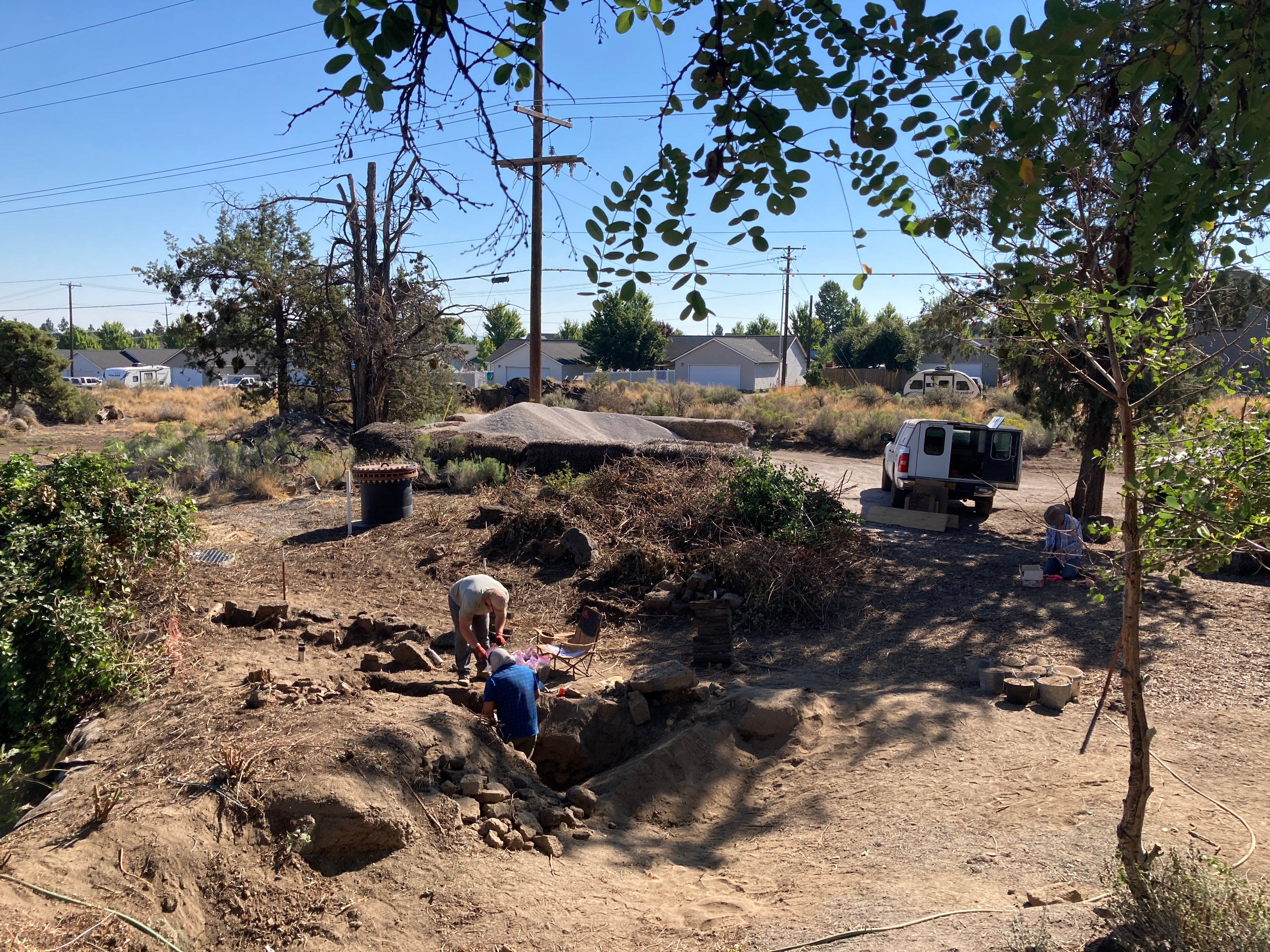 |
|
 |
|
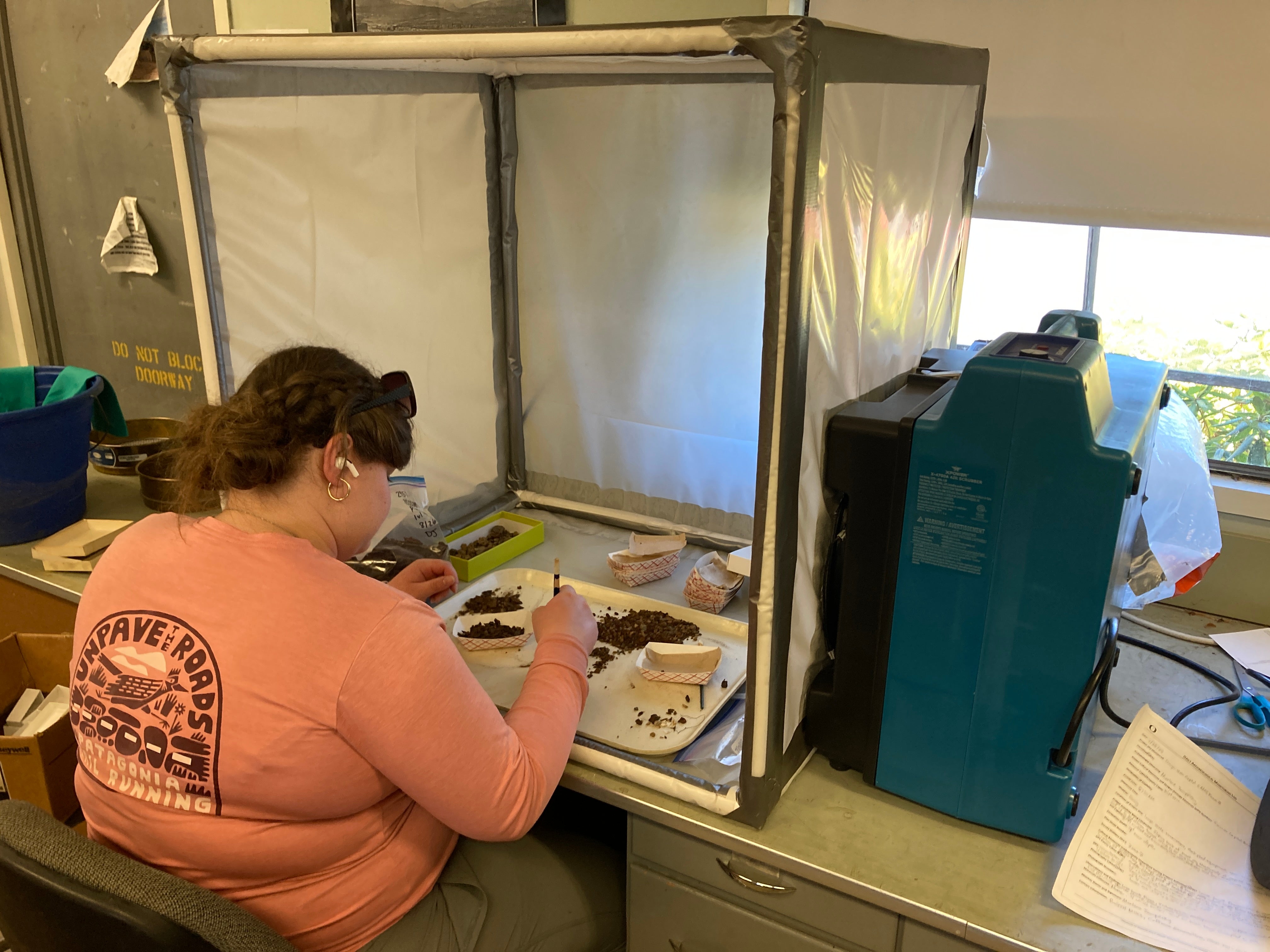 | The finds from the excavation included six fragments of asbestos-bearing fabric. The entire assemblage was considered "contaminated" and had to be processed in a fume hood. |
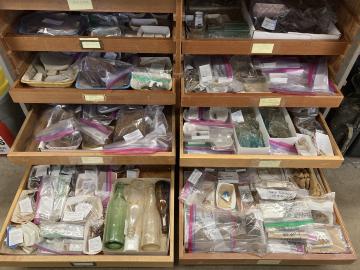 | The cataloged assemblage (group of artifacts designated for conservation) is over 2100 items. |
After items have been cleaned, archaeologists begin cataloguing and identifying the objects as best they can. Here are some notable finds.
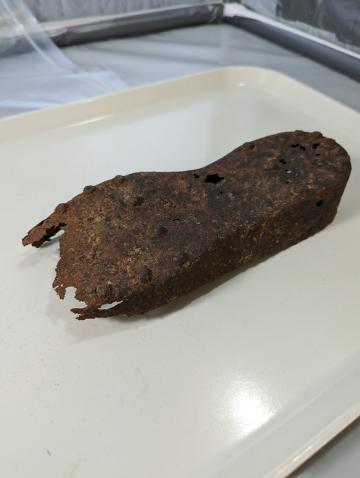 | This metallic shoe has spikes for traction. |
 | This ceramic was originally found in several pieces. |
- What are the horizontal and vertical site limits? What is the integrity of the deposit and materials within the refuse dump? Can chronological sequences be delineated so that analytical units can be identified?
- What can artifacts reveal in regard to the daily lives and social status of the owners and workers of the Lilly Dairy, and how does this relate to the wider Bend Community during a significant period of growth in the first half of the twentieth century?
- Are there artifacts present in the deposit that are representative of the dairy industry during the period of operation of the Lilly Dairy (ca. 1915-1945) which could link it to the wider agricultural industry of Central Oregon?
- What is the chronological relationship between the stone wall, the refuse dump, and construction of the Andersen house?
